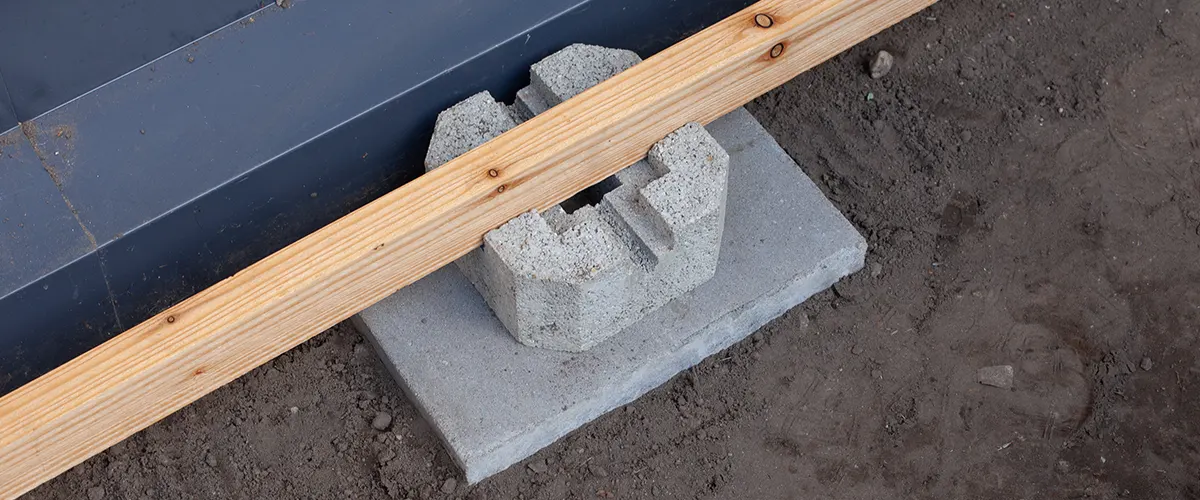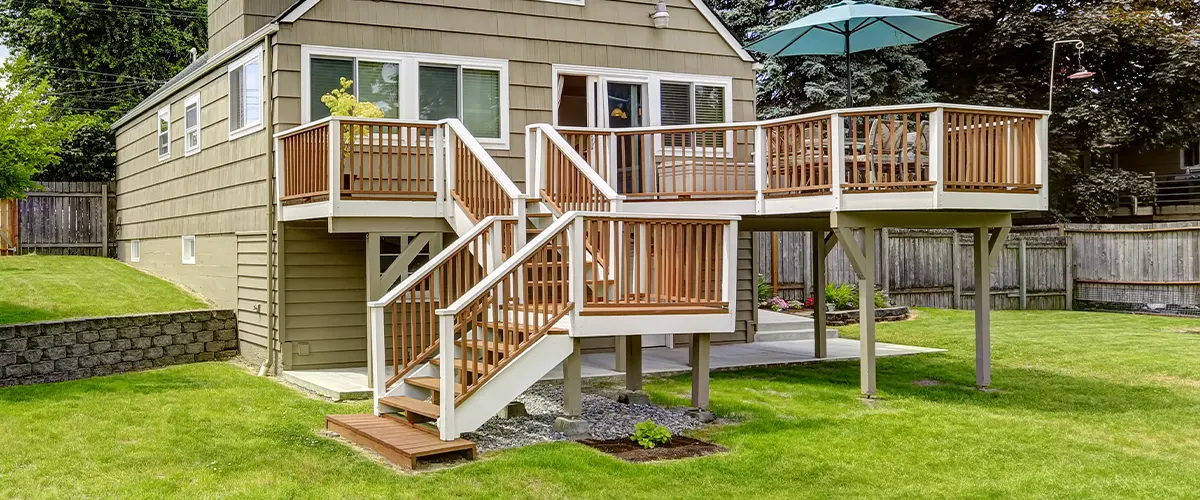Deck Footings Demystified: Your Blueprint for a Safe, Durable Outdoor Haven
Selecting the Right Deck Footings for Stability and Sturdiness
When it pertains to constructing a deck, one of one of the most critical choices you will certainly make is selecting the ideal footings for stability and resilience. The durability and safety of your deck depend greatly on the sort of grounds you choose, as they provide the crucial support and stability to endure the test of time. With a myriad of options offered, it can be frustrating to determine which grounds are best suited for your details demands. In this discussion, we will certainly explore the various kinds of deck grounds, think about the crucial variables to weigh when making a choice, and look into the advantages and disadvantages of different options. By the end, you will have a clearer understanding of the choices available and be far better outfitted to make a notified choice for your deck project.
Sorts Of Deck Grounds
These grounds consist of a round opening filled up with concrete, which supplies a solid foundation for the deck articles. Concrete pier footings are fairly very easy to mount and use superb stability, making them a prominent choice for lots of deck projects.
An additional sort of ground is the helical stack ground. Helical heaps are steel shafts with helical plates affixed to them. These footings are mounted by screwing them into the ground, which creates a safe and secure structure for the deck. Helical heap footings are excellent for areas with tough dirt conditions, as they can be installed in practically any sort of dirt. They additionally enable easy modification and progressing of the deck if needed.
Alternatively, some builders opt for precast concrete grounds. These footings are made from durable concrete and can be found in different shapes and sizes to fit various deck layouts. Precast concrete footings are hassle-free to mount and provide a steady base for the deck framework.
Ultimately, another alternative is the post-in-anchor ground system. This sort of footing entails driving a steel anchor right into the ground and connecting it to the deck blog post. It uses versatility in regards to positioning the deck articles and is suitable for decks with lightweight structures.
When choosing the appropriate kind of deck ground, it is vital to think about aspects such as soil problems, deck lots, and regional building regulations (Deck Footings). Consulting with an expert specialist or structural engineer can help make sure the appropriate ground is picked for a stable and risk-free deck
Elements to Take Into Consideration When Selecting Grounds
When choosing the proper footings for a deck, it is important to meticulously consider different aspects such as dirt conditions, deck load, and adherence to regional building ordinance. These elements play a considerable function in guaranteeing the security and longevity of the deck framework.
The kind of dirt on which the deck will be developed figures out the type of footings required. On the other hand, decks constructed on clay or expansive dirts may require footings that can accommodate the soil's propensity to broaden and agreement.
One more essential element is the deck lots. The weight of the deck, including the materials used and any prospective live lots such as furniture or events, have to be taken right into account when choosing footings. The footings should be made to birth the weight of the deck and distribute it uniformly to prevent any type of structural problems or failures.
Last but not least, adherence to local building ordinance is extremely important. Building regulations differ from region to area, and it is necessary to follow the certain requirements set by the neighborhood authorities. Deck Footings. These codes guarantee that the deck is built securely and satisfies the essential criteria for structural integrity and load-bearing capacity
Concrete Grounds: Advantages And Disadvantages

Concrete grounds offer a number of advantages and disadvantages when made use of as the structure for a deck. On the positive side, concrete footings offer outstanding stability and sturdiness.
Another advantage of concrete grounds is their flexibility. They can be put right into different shapes and dimensions to accommodate various deck designs and configurations. Concrete footings can be customized to fit the certain requirements and requirements of the deck framework.
Nevertheless, there are additionally some drawbacks to making use of concrete grounds. One major drawback is the price and labor involved in their installation. Concrete grounds require excavation and commonly require the support of heavy machinery. This can enhance the overall expense of the deck job and may require expert assistance.

Helical Piers Vs. Sonotubes: Which Is Much better?
In taking into consideration the foundation choices for a deck, the comparison in between helical piers and sonotubes is critical in determining the remarkable option. Helical piers, additionally called screw stacks, are steel shafts with helical plates connected to them. They are twisted right into the ground utilizing hydraulic machinery, offering a resilient and steady foundation for the deck. On the various other hand, sonotubes are cylindrical types constructed from cardboard or fiber material that are full of concrete. They are positioned in an opening went into the ground and supply assistance for the deck.
When it this post comes to stability and resilience, helical piers have the top hand. The helical plates on the piers create a strong hold with the dirt, moving or avoiding any kind of motion of the deck. This is specifically beneficial in locations with unpredictable or changing soil problems. Sonotubes, on the various other hand, depend entirely on the concrete loading for stability, which may not offer the exact same degree of stamina and resistance.
In regards to setup, helical piers are relatively less complicated and faster to install contrasted to sonotubes. The hydraulic machinery made use of to turn the piers right into the ground makes certain a fast and efficient procedure. Sonotubes, on the other hand, require excavating holes and pouring concrete, which can be labor-intensive and taxing.
Additionally, helical piers are an even more versatile choice. They can be utilized in various soil problems and can be changed or enhanced if needed. Sonotubes, on the various other hand, may call Discover More for added support, such as rebar, in particular dirt problems or locations with high load requirements.
Choosing the Right Footings for Your Deck's Measurements
For optimal structural integrity, it is important to thoroughly pick the proper grounds that line up with the measurements of your deck. The dimensions of your deck, including its size, size, and height, play a considerable function in identifying the kind and size of grounds needed.
When picking footings for your deck, it is crucial to consider the load-bearing capacity of the dirt. The weight of the deck, incorporated with the weight of any kind of furnishings or individuals on it, puts in a significant force on the grounds (Deck Footings). It is vital to pick footings that can appropriately support this weight without shifting or sinking over time.
The size and form of the grounds ought to likewise be thought about. Bigger decks with higher measurements call for larger footings to offer enough security and support. The form of the grounds, whether they are rounded or square, depends on the style and format of the deck. Furthermore, the depth useful link at which the footings are installed must be established based on the frost line in your area to prevent any heaving or moving due to freezing temperatures.
Final Thought
In verdict, picking the appropriate deck footings is essential for ensuring security and sturdiness. Aspects such as the type of footings, the deck's dimensions, and the pros and cons of various alternatives must be thought about.
These grounds consist of a cylindrical opening loaded with concrete, which provides a solid structure for the deck messages. Concrete pier footings are relatively easy to install and supply excellent stability, making them a prominent choice for several deck tasks.
Precast concrete grounds are practical to install and offer a stable base for the deck framework.
It provides versatility in terms of positioning the deck posts and is ideal for decks with light-weight frameworks.
Concrete footings supply a number of benefits and downsides when used as the structure for a deck.